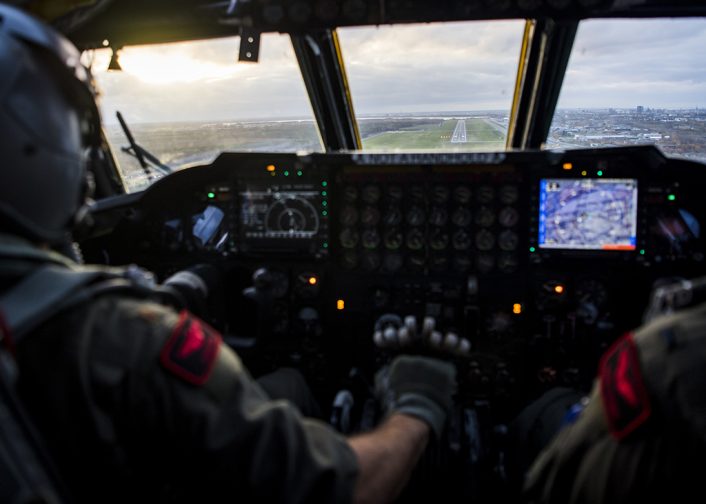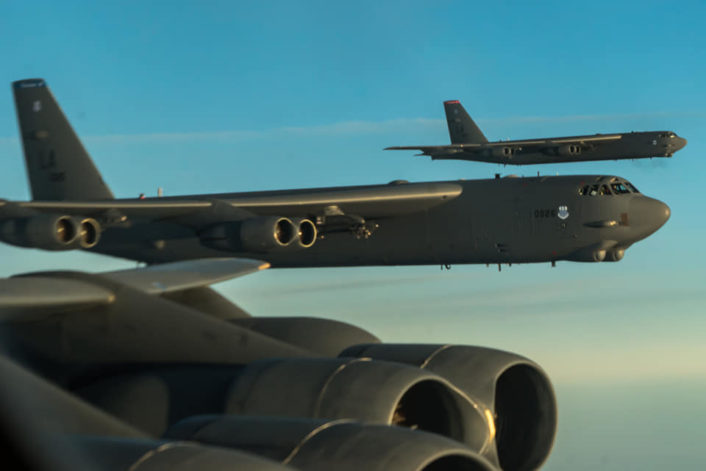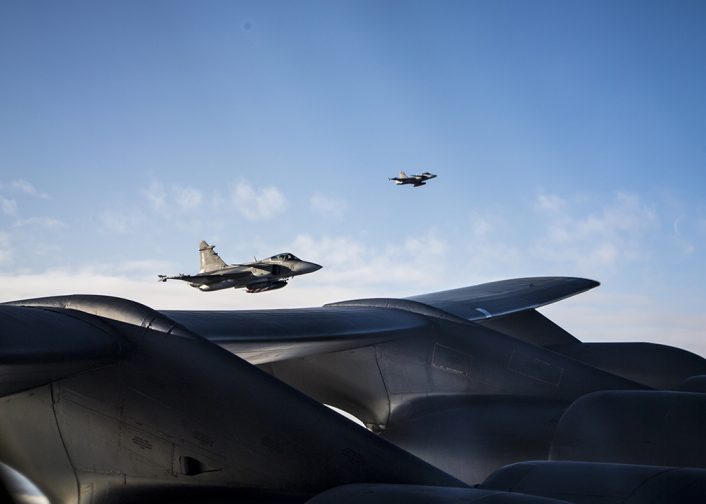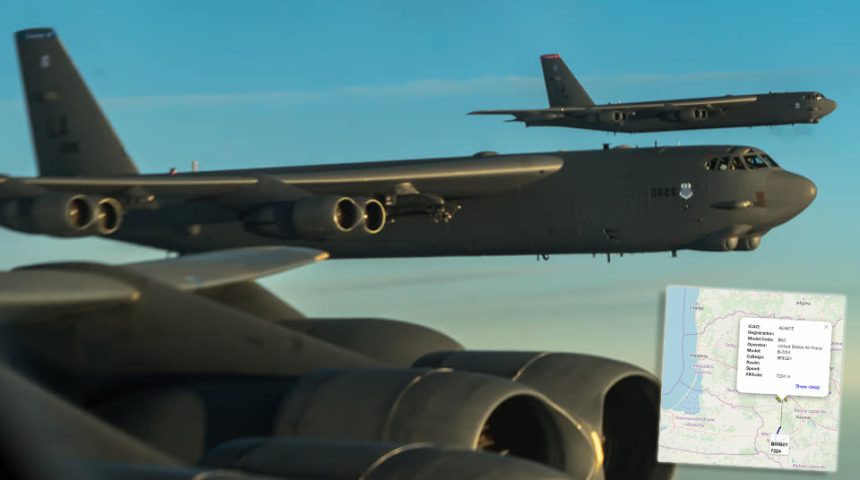The “Buffs” deployed to RAF Fairford are flying across Europe, from the Black Sea to the Baltic region. Let’s have a look at the details that could be gathered by means of Open Source Analysis.
Four B-52 assigned to the 96th Bomb Squadron, 2nd Bomb Wing have left Barksdale Air Force Base, Lousiana, on Oct. 10, 2019, to deploy to RAF Fairford, UK, where are currently based as part of Bomber Task Force Europe 20-1.
B-52s were deployed there in March, for the largest deployment of a single bomber type since the beginning of the War in Iraq back in 2003.

The Stratofortress strategic bombers are conducting integration and interoperability training with European allies and partners in the region during their deployment, practicing bomber operations from a forward operating base.

As part of their training, B-52s have conducted an extended duration sortie over the Black Sea region with the support of our allies and partners on Oct. 19: the mission, which lasted 12 hours, included training with Romania, Ukraine and Georgia. During the mission, the American bomber was allegedly intercepted by a Russian Flanker in international airspace over the Black Sea some 70 kilometers from the Russian border.
Russia’s Su-27 fighter in the Black Sea intercepted an American B-52H bomber flying 70 kilometers from the Russian border. US Air Force B-52 was conducting joint air excercise with Ukraine, Georgia and Romania on October 19 but left the area after Russian jets arrived there. pic.twitter.com/JYXwDif6ei
— Tele-Visual Infolink (@TVI_PK) October 23, 2019
Two B-52s were involved in the Black Sea mission: AFKAI11 #60-0025 and AFKAI12 #61-0025. The bombers could be tracked online using their Mode-S transponders (as already happened earlier this year when they deployed to Qatar). Interestingly, AFKAI was a temporary callsign and the bombers changed to BRIG c/s at a certain point during the mission, before returning to RAF Fairford.
19 OCT: USAF B52 AFKAI12 61-0025 departed Fairford at 0906z – Black Sea mission pic.twitter.com/TUcEyjKXnJ
— Mil Radar (@MIL_Radar) October 19, 2019
19 OCT: USAF B52 AFKAI11 60-0025 departed Fairford at 0905z – Romania and Eastern Mediterranean mission. Return callsign changed to BRIG02 pic.twitter.com/AN7PJZRPsb
— Mil Radar (@MIL_Radar) October 19, 2019
Then, on Oct. 23, three “Buffs” flew over the Baltic region. Once again, flight tracking was made possible by the aircraft’s transponders, providing some interesting details about the serial numbers involved, radio callsign used and route the aircraft flew.
2 USAF B52 BRIG01/02 over Lithuania now bombing Kazlu Ruda range pic.twitter.com/wVz52WGxs7
— Maleshov (@maleshov) October 23, 2019
BRIG flt
USAF B52’S pic.twitter.com/NGMcYNAKcr
— Freedar.uk (@freedar_uk) October 23, 2019
23 OCT: USAF B52 61-0006 BRIG03 departed Fairford at 1048z – Kaitseväe MTA (Estonia) mission pic.twitter.com/CXrigpjBjJ
— Mil Radar (@MIL_Radar) October 23, 2019
As the B-52s operated in the Baltic, an RC-135V flew a mission in the area, most probably to detect emissions from Russian radars in the Kaliningrad area:
23 OCT: USAF RC-135V 64-14846 WAGON54 departed Mildenhall at approx 0620z – Baltic mission pic.twitter.com/5tAjrjcEJi
— Mil Radar (@MIL_Radar) October 23, 2019
US B-52 over Kattegat, west coast of Sweden. One more over the North Sea.
Interesting it seemed it headed tiwards Norway but turned south
Rivet Joint off the coast of Kaliningrad picking up signals. pic.twitter.com/cxHC20CyBj
— Jamming (@balticjam) October 23, 2019
One B-52 over Suwalki Gap and one heading towards Estonia.
And SwAF AEW heading back.
Swedish Air Force
SAAB 340 AEW
100003, 4A821F pic.twitter.com/6e8odfKdKO
— Jamming (@balticjam) October 23, 2019
During the mission, they were escorted by the Czech Air Force JAS 39 Gripen supporting NATO Baltic Air Policing, that conducted a pre-planned intercept on the U.S. bombers.










